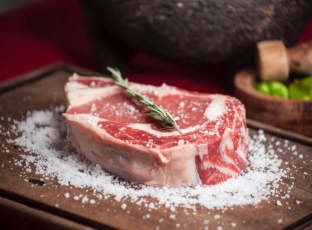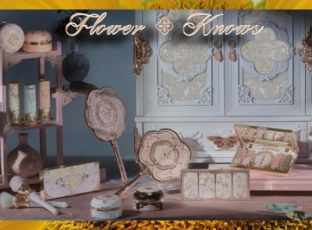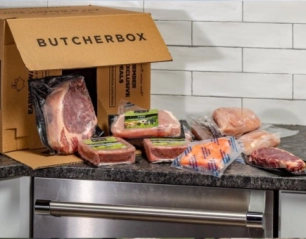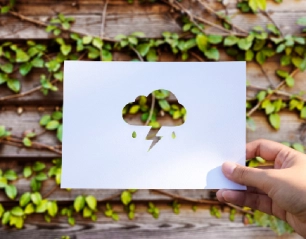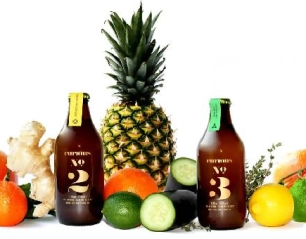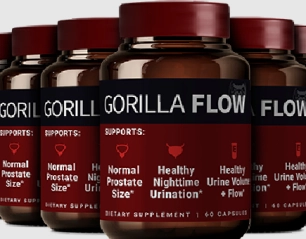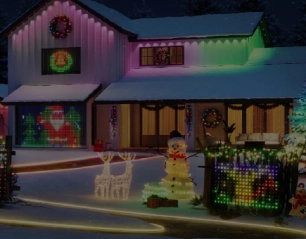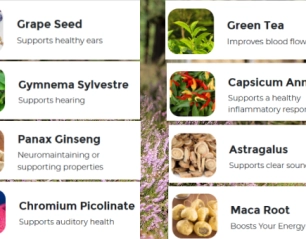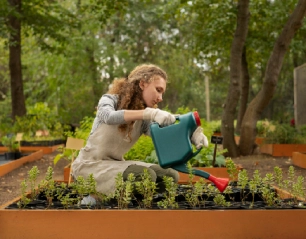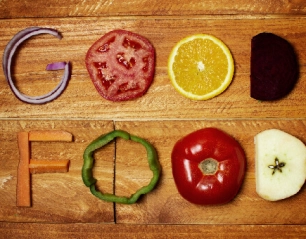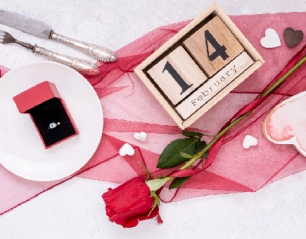If anyone wants to imagine gardening, he or she is likely to think of extensive lawns, expanses of land, and lots of sunshine. But the point is, as urbanization increasingly dominates people’s lives, they try to incorporate elements of nature into their homes including micro-apartments. Small-space gardening indoors isn’t just a fad, it is a concept parallel to Lifestyle, where beauty, health, and the environment are intertwined. The goal of this guide is to show you how even you, with the smallest of available space, can have a successful garden.
Benefits of Indoor Gardening
There are many advantages associated with indoor gardening apart from adding the aesthetic value of plants. Flora purifies the air by filtering out poisons and creating oxygen. They can also help to decrease stress, improve mood and increase creativity. Further, cultivating herbs, vegetables or flowers inside your home is also a beneficial and vegetarian way of feeding yourself or beautifying your house. Research has also indicated that exposure to plants can enhance concentration and performance, and designing the home office to accommodate plants makes perfect sense.
Choosing the Right Plants
Picking the right plants is also very important for the indoor garden keeping in mind that one will be working with limited space. Keep in mind those factors when selecting specific plants:
- Lighting Requirements: Some plants naturally prefer a low amount of light, like pothos, snake plants, and peace lilies, while others prefer a lot of sunlight, like succulents and some herbs.
- Space Availability: Choose small plants such as spider plants, ferns, or cacti that do not need much space to spread.
- Purpose: You have to decide whether you want ornamental plants, plants that clean the air, or plants that one can eat such as herbs, lettuce or tomatoes. Mineral planning should therefore involve learning how to arrange many different types of plants both those that serve a purpose and the beautifying ones.
Finding the Perfect Spot
Spaces are limited, in finding places to put the plants you have to be very tactical. Look for:
- Windowsills: These are good for the plants in areas with direct sunlight conditions.
- Corners: Hanging baskets or wall shelves should be used to take full advantage of the wall space.
- Furniture Tops: Plant stands may not always be available or suitably placed, therefore, dressers, side tables or bookshelves can be used.
- Bathrooms: Due to the humidity in the bathroom they are ideal for tropical plants, like ferns and, certainly, orchids.
- Kitchen Areas: Many people prefer to grow some small edible plants or herbs near the kitchen as this adds aesthetic beauty to your environment and it is useful too.
Containers and Potting Solutions
Please make sure that your pots drain well to avoid water logging which is very unfriendly for your plants. In case you would love to go the extra mile to add more creativity, you could decide to paint or even decorate your pots to match the interior decor. The selection of an appropriate container is very important for the health of your plant as well as the beauty of your space. Consider these options:
- Self-Watering Pots: These are appropriate for novices who might not be quick to remember to water at correct intervals.
- Hanging Planters: Another which I found interesting for making living green walls.
- Repurposed Items: When you need to compose a unique look, use old Mason jars, tin cans or even teacups for added flair.
- Stackable Planters: These are space-saving solutions and enable you to cultivate more than one plant in one location.
Soil and Fertilizer
Like other plants, indoor plants require appropriate soil to grow well. Select a suitable growing mix for the type of plant of your interest in the traditional method of structuring indoor plants. For instance, while growing succulents one needs a drainage layer, and herbs thrive in fertile soil. Some plants need feeding while others do not and when feeding, use organic or synthetic fertilizers, to ensure that you feed them at the right time and the right proportions. You can also try the natural compost in addition to using coffee grounds for the plants. One can also try on natural compost as an extra nutrient.
Watering Tips
In interior gardening, one of the biggest followings that most people make is overwatering plants. To ensure proper watering:
- Check the Soil: Take a finger and stick it an inch into the ground. While the plant feels dry it is time for watering.
- Use the Right Amount: This means, watering the plant up to when the water begins to drain from the bottom of the pot.
- Follow Plant Needs: Stable plants have different water demands. Underdeveloped plants like cacti require little water compared to developed plants like ferns and tropical ones.
- Seasonal Adjustments: This means that plants during winter take less water for irrigation a process which is held by plant growth.
Lighting Solutions for Indoor Gardening
As for the position of the light source, it is also possible to experiment, as it will provide both, the needful to the plant and an appealing appearance to the arrangement. There may not be that much natural light in small spaces but there is always a way to light up the place artificially. Consider these options:
- LED Grow Lights: They are abundant and efficient in using energy and can produce any intensity of light necessary for photosynthesis.
- Fluorescent Lights: Suitable for growing small plants and seedlings.
- Placement: Ensure the lights are placed at about 6-12 inches from your plants and should be raised as the plants grow.
Maximizing Space with Vertical Gardening
These vertical gardens are a complete revolution for owners of miniature apartments. Here’s how you can incorporate it:
- Wall Planters: If space is a problem you can use mounted planters or vertical rack stands.
- Trellises: Encourage hanging plants as climbing plants such as pothos or ivy.
- Pocket Gardens: Some shapes like fabric felt pockets for walls are capable of holding lightweight plants.
- Hanging Baskets: Such can also enhance the aesthetics of your indoor garden, as well as save space on the floor.
Care of your indoor garden
For an indoor garden to be successful, it has to be consistent. Follow these maintenance tips:
- Pruning: Prune the plant to get rid of dead builds such as dead leaves and stems that discourage new growth.
- Pest Control: Search your plants for the infestation of pests such as aphids or spider mites now and then. Organic pest control should be used where there is a need especially if the pest has become a menace.
- Rotating Plants: Turn pots once a week to give all the plants a chance to face the light.
- Cleaning Leaves: Ballantyne suggests that through greying plant leaves, the plant gets a chance to produce food through photosynthesis.
Incorporating Edible Plants
This is because accessing fresh greens throughout the year is not only reasonable but also can be quite rewarding. Here are some beginner-friendly options:
- Herbs: Basil, mint, parsley and cilantro all the spices that can be grown easily on the window sill.
- Leafy Greens: Vegetables like spinach/kale and lettuce are well suited to this growing method if placed in shallow containers.
- Microgreens: These velvet plants which are loaded with nutrients are fast-growing plants and need less space.
- Cherry Tomatoes: The small type of these plants will need a small trellis or cage to grow properly while remaining indoors.
Creating a Relaxing Ambiance
Beautiful indoor plants will help turn your compact home into a peaceful oasis. Group plants such as tall plants with short ones, to give the appearance of a layered garden. Safety permitting – Champagne glasses, bottles and corks could be augmented with string lights or candles. You should also use the pots and accessories that complement the environment of your home. Another way is to combine the green elements of the interior with natural additions such as stones or wooden furniture.
Typical Difficulties and How They May Be Eradicated
Following are the challenges and how to overcome them:
- Limited Light: Buy grow lights or get your plants closer to windows – or both.
- Overwatering: Water them as required and make sure that the drainage is well done.
- Pest Infestations: Any plants that have been quarantined should be treated as soon as possible using homemade remedies. Examples include neem oil sprays and insecticidal soaps are the alternatives.
- Humidity Issues: If the air is too dry, use a humidifier or spray your plants with water if you are in winter.
Seasonal Considerations
First of all, let me say that indoor gardening is not completely protected from seasonal changes. During winter the plants should be watered sparingly and be put as far as possible from the cold windows or the heater. During summer, one should check on the plants regularly if they have dried up and if so water the plants. Planting in spring or in autumn is the best time to repot or even propagate plants.
Starting Small & Growing Your Garden
Indoor gardening is as easy as a pie, but for beginners, it is wise to try out some of the easy-to-handle plants. Only try one or two questions at a time and expand as you begin to gain the necessary build-up and knowledge to answer them. Plant in a more dynamic way to ensure that you have different types of plants in one indoor environment. Do not be afraid to try something not very typical either in terms of positioning of tools in the garden too as well as place some extraordinary plants in it.
Conclusion
Growing plants indoors for little areas is both enjoyable and fulfilling; beautifying your living space by having plants at home. It may sound unconventional, but it is possible to green your home, no matter the size of land you may have, through gardening expert knowledge in plant selection and choice of tools and methods. Accept the happiness of taking care of life and witness your small indoor garden grow. From attaining serenity to creating a living greenery system and enhanced work production, there is something in indoor gardening for everybody. Go out and start the process of making your area a place for living green.
MUST READ THIS: The Magic of Bonsai Tree: Small Trees With Big Impact
Frequently Asked Questions (FAQs)
Some greens that do not require a lot of care and can do well in inside environments include; pothos, snake plants and herb plants like basil and mints.
The requirement of irrigation is best understood according to the type of plant, as well as the time of year. Water the plants one or two times a week depending, on how dry the soil is to satisfy the plants.
Indeed, vegetables such as lettuces, microgreens, and cherry tomatoes well fit into small-surface production as they cover a small area.
Was this helpful?





